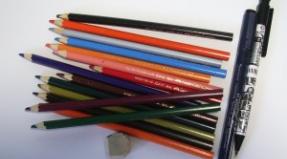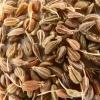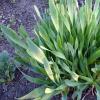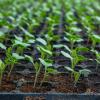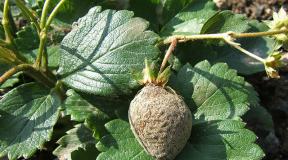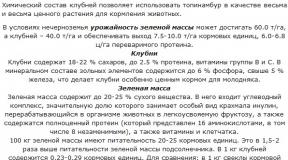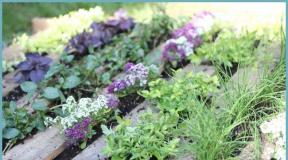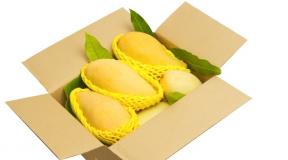Cooking technology, assortment, serving rules. Compotes. Technological calculations in the production of canned food Compote technological line plan
Compotes.
Compotes- these are canned food prepared from fresh or frozen fruits or berries, prepared in an appropriate way, filled with sugar syrup, packaged in glass or tin containers, hermetically sealed, pasteurized or sterilized.
Compotes can be made from one type of fruit or berries, or from several. If the compotes are made from several types of fruits or berries, this is an assorted compote.
Compotes are produced according to GOST or TU. Mass fraction of fruits or berries must be at least 15%.
Compotes are classified as canned foods of the “B” group, pH (3.7 - 4.2), that is, canned foods with controlled acidity.
Compotes. Calculation of the need for containers, lids.
To calculate the need for packaging, it is necessary to know the production plan, losses and waste of packaging during production. The calculation is carried out according to the formula:
Where
PT - the need for containers, pcs
A - the number of cans that need to be released according to the production plan, pcs
p 1, p 2 …… p n - losses and waste in production,%
The calculation of the need for the lid is carried out in the same way as the calculation of the need for the can.
Compotes. Calculation of net weight.
The net weight of a can can be determined in a practical or calculated way.
If you determine the net weight in practice, then it must be taken into account that the free space inside the can should be (0.8 - 1.0) cm.
The estimated net weight can be determined by the formula:
P = V * γ * κ
where
Р - net weight of the can, g
V - can volume, cm3
γ - specific gravity of the product, g / cm 3
κ - fill factor (0.85 - 0.95)
The specific gravity of the product is determined by the formula: 
where
n dry - mass fraction of dry substances in canned food,%
Compotes. Determination of the consumption rate.
for 1000 kg 
where
S is the mass of the component according to the recipe, kg
Consumption rate of raw materials and materials for 1000 cans the finished product, taking into account dry substances, is calculated by the formula:
where
T - component consumption rate, kg
S is the mass of the component according to the recipe in 1000 cans, kg
С 1 - dry matter content in the finished product,%
р 1, р 2 ....... р n - losses and waste from operations,%
С 2 - dry matter content in raw materials,%
Compotes. Calculation of the amount of sugar
syrup 
where
q - amount of sugar, kg
B - amount of syrup, kg
p is the required concentration of syrup,%
The amount of sugar required to obtain compote a given concentration is carried out according to the formula:
q = B * p / 100
where
q - amount of sugar, kg
B - the amount of compote, kg
p is the required concentration of compote,%
Compotes. Calculation of the concentration of the syrup.
The calculation of the concentration of the syrup is carried out according to the formula:

Compotes. Calculation of the amount of citric acid.
The calculation of the amount of citric acid for the preparation of the compote of the required acidity is carried out taking into account the acidity of the raw material according to the formula: 
where
Y - the amount of citric acid, kg
A - the amount of compote, kg
a - acidity of compote,%
B - the amount of raw materials, kg
в - acidity of raw materials,%
Compotes. Calculation of the content of dry substances in compotes.
The calculation of the dry matter content in compotes with seeds is carried out according to the formula: 
where
k - the content of seeds in fruits,% to the mass of fruits
Calculation of the dry matter content in pitted compotes is carried out according to the formula: 
where
С comp - dry matter content in compote,%
S pl - fruit content according to the recipe, kg
С pl - dry matter content in fruits,%
S sire - syrup content according to the recipe, kg
С sir - content of dry substances in syrup,%
M is the mass of the product, since we will do the calculation for 1 ton of the finished product, when we take M for 1000 kg.
Compotes. Calculation of the dry matter content in fruits.
The calculation of the minimum dry matter content in fruits, which will ensure the production of standard products, is carried out according to the formula:


?
MINISTRY OF AGRICULTURE OF THE RUSSIAN FEDERATION
FG BOU VPO "PENZA STATE AGRICULTURAL ACADEMY"
Department of "Crop production"
COURSE WORK
on the topic: "TECHNOLOGY OF PRODUCTION OF CHERRY COMPOTE"
Performed:
student of group 254
Panova N.A.
Checked:
Semina S.A.
Penza, 2011
Content
Introduction …………………………………………………………………………… .. 3
1. Literature review …………………………………………………………………… 5
2. Requirements for the quality of raw materials for processing ……………………………… ..7
3. Short-term storage of raw materials at processing plants ... .9
4. Justification of the choice and description of the technological scheme for the production of cherry compote ………………………………………………………………… ... ... 12
five . Product calculation …………………………………………………………. nineteen
5.1. Raw material receipt schedule ……………………………………………… .19
5.2. Accounting and packaging of finished products ……………………………………… .19
5.3. Calculation of the consumption of raw materials and materials for the production of cherry compote ………………………………………………. ……………. ………… ………………… 20
5.4. Selection and calculation of equipment …………………………………………… 21
5.5. Calculation of auxiliary materials ……………………………………… 24
6. Technological and sanitary-microbiological control of production ………………………………………………………………………………………… 29
7. Types of spoilage and defects in finished products ……………………………………………………………………………………………… 34
8. Disposal of production waste …………………………………………… 3 6
Conclusions and suggestions …………………………………………………………… 38
List of used literature …………………………………………… 39
Introduction
An important task facing the country is a significant increase in agricultural production and a fuller satisfaction of the population's needs for food. An important role in solving these problems belongs to enterprises producing canned food and other methods of processing plant raw materials.
One of the main methods of preserving food from spoilage is canning in an airtight container.
The production of canned food is of great importance for the population and the national economy of our country. Canned food products can significantly reduce the labor and time spent on cooking at home, diversify the menu in the public catering network, provide year-round food for the population, as well as create current, seasonal and safety stocks. Canned food is indispensable food for the supply of expeditions, the army and the navy.
Many canned foods have become part of the diet and are in high consumer demand.
When processing good-quality raw materials, the yield of good quality products increases, and their range expands. However, due to inept handling of products during harvesting and in the post-harvest period, their quality decreases, which limits the use of raw materials for their intended purpose.
For the uninterrupted supply of the population with food products and raw materials for industry, it is necessary to have sufficient reserves of each type of product. Preserving crop products until they are used is not an easy task. Even with a high yield and a large gross yield, the desired effect will not be obtained if large losses of mass and quality occur at various stages of product promotion to the consumer. Losses can be great if food is handled ineptly in the post-harvest period.
According to FAO (International Food and Agriculture Organization), the loss of grain and grain products during storage is 10-15% annually, losses of potatoes, vegetables and fruits - 20-30%.
The loss of storage products is a consequence of their physical and physiological properties. Only knowledge of the nature of the product and the processes occurring in it, as well as the developed storage modes, allows you to reduce losses to a minimum. Reducing food losses during storage is seen as one of the most important ways to reduce food shortages.
The aim of the course work is to study the technology of production of cherry compote.
The objectives of the course work to achieve this goal are:
- study of the theoretical foundations of the organization of production of cherry compote;
- assessment of the current state of production of cherry compote;
- identify shortcomings and outline ways to eliminate them.
1. Literature review
Compotes are prepared fruits or berries, drenched in sugar syrup, sealed and sterilized.
The main purpose of processing fruits and vegetables (as well as keeping fresh varieties of maturing) is to protect them from damage for a long time. We are talking mainly about non-soft types and varieties of products that are canned, that is, preserved in an inanimate state. Preservation methods are based on stopping the vital processes of raw materials and suppressing the development of microflora. The purpose of fresh storage and canning of fruits and vegetables is the same - year-round provision of fruit and vegetable products to consumers.
When processing fruits and vegetables, enzymes are inactivated, metabolic processes stop, the chemical composition changes, and the calorie content of products often increases as a result of the addition of oil, sugar, concentration. If the technological requirements are observed, organoleptic characteristics, taste-aromatic and dietary characteristics are improved, the content of vitamins decreases slightly. As a result of heat treatment, microbiological processes, the addition of sugar, acetic acid, spices, canned food acquire specific qualities that complement the natural characteristics of the raw materials.
There are specific requirements for fruits and vegetables intended for processing: optimal indicators of chemical composition and organoleptic properties, technological suitability for the production of one or another type of canned food, minimal waste of raw materials, organizational and economic profitability. If storage varieties are needed fresh for storage, then for processing - technologically suitable for canning.
Processing methods for fruits and vegetables can be classified into physical, microbiological and chemical.
Physical include heat sterilization, including aseptic preservation; drying, including freeze drying; freezing; canning with high concentrations of sugar, salt, alcohol; sterilization using depressurizing filters.
Microbiological methods based on the accumulation of lactic acid and alcohol include sauerkraut; pickling cucumbers, tomatoes and other vegetables; urinating fruits and berries; fruit and berry winemaking.
Chemical methods include sulphitation; the use of sodium benzoate; the use of sorbic acid; use in low concentrations of acetic acid in combination with pasteurization.
Canned compotes are produced from the best fresh fruit and berry raw materials, completely cleaned and freed from all inedible and inedible parts.
Canned fruit compotes most fully preserve the valuable qualities of fruits and berries in comparison with other canned fruit preserves and can be stored for several years in ordinary warehouses. In addition to nutritional and gustatory value, they must have an attractive appearance, therefore, the requirements for the quality of raw materials (fruits and berries) are high. The correct selection of economic and botanical (pomological) varieties of fruit and berry crops, color, taste, aroma of fruits and berries, their ability to maintain a sufficiently dense consistency and not overly boil during sterilization is also very important. It is especially important to collect fruits and berries during the period of their technical, or so-called canned maturity (comes a few days earlier than full biological maturity), when they are already fully formed, have a taste and aroma characteristic of a mature state, but still quite dense and strong , with elastic pulp, which to a certain extent should be preserved in canned food.
2. Requirements for the quality of raw materials for processing
The nutritional value of processed fruits and berries and the quality of canned food largely depend on the quality of the raw materials. The chemical composition of fruits and berries, their size, color and other technological indicators are greatly influenced by many factors that must be taken into account when deciding whether to use one or another type of raw material for the production of various canned food.
Fruits for processing must have certain technological properties, tastes, color, odor, degree of ripeness, size and consistency.
The country's farms grow a large number of varieties of fruit and berry crops, which differ greatly in terms of technological indicators. When zoning varieties of any crop, their yield, commercial and technological qualities, resistance to diseases and pests, etc. are taken into account.
The most suitable for compotes are sugary varieties that have fruits of a beautiful appearance, high taste, with a good aroma, do not boil down and do not change color during processing. Berries must be fresh, healthy, without wormholes and stains, mechanical damage and other defects.
To obtain raw materials of the required quality, special canned varieties of fruits and berries are bred. Great importance is attached to a correctly defined removable ripeness of the fruit. Most of the fruits are harvested at the stage of technical maturity, when they have reached their full development, have acquired their characteristic taste, size, shape and color, but still have a firm consistency. Unripe fruits should not be used, as this negatively affects the taste and aroma of compotes.
Unripe berries contain a lot of acids, are poorly colored and therefore reduce the quality of compotes; overripe - easy to boil during sterilization.
Cherries must ripen on the tree, as their characteristic flavor develops only when the fruit is fully ripe, unripe cherries have an astringent taste.
The best varieties are those whose fruits have brightly colored pulp, low acid content, and a size of at least 12 mm in diameter. Such requirements are met by the varieties Vladimirskaya, Lyubskaya, Griot Ostgeimsky, Zhukovskaya, Black consumer goods, Shpanka, Kent, etc. It is undesirable to use unripe fruits, which are usually small, contain a lot of acids, few dyes.
In the production of compotes, the addition of natural and artificial colors, synthetic aromatic and preservatives is not allowed.
3. Short-term storage of raw materials at processing plants
After harvesting fruits and vegetables and subsequent storage, life processes continue in them - respiration, ripening, evaporation of moisture, that is, they are inherent in a constant exchange with the environment, and therefore they need a continuous flow of energy. As the fruits overripe, their quality indicators deteriorate, the immunity of the fruits also decreases, therefore they are susceptible to microbiological deterioration and physiological diseases.
During storage, fruits lead a heterotropic lifestyle, using the nutrients accumulated during growth. In this case, vital processes are externally manifested by respiration: during storage, products absorb oxygen and release carbon dioxide (carbon dioxide), water vapor and other metabolic products, as well as heat. Substances that oxidize during respiration are sugars such as glucose. Carbohydrates, proteins, fats, organic acids form intermediate products at certain stages of transformation. Naturally, during respiration, the plant tissue is depleted in nutrients.
Cherry fruits are a heterogeneous group of objects characterized by a slight loss of water due to thin integumentary tissues and cell walls, and a weak water-holding capacity of colloids. In stone fruits, with a short stay after harvesting under conditions of elevated temperature, the protoplasm of the cells coagulates, and the cell juice flows out. Thus, for their short-term storage, it is necessary to create special conditions that prevent moisture evaporation and breathing. This is achieved by storage in refrigerators and sealed packaging.
The fruits received for processing are stored in covered raw materials sites. In addition to short-term storage at raw materials sites, fruits and vegetables are subjected to long-term storage in order to extend the processing season. Long-term storage of raw materials can be carried out both in a chilled and frozen state, for which special storages or refrigerating chambers are used. The storehouses are equipped with natural or artificial ventilation. Storage of raw materials can be carried out both in bulk and in containers.
The time between harvesting and processing is important - it should be as short as possible. With every hour of storage at raw materials sites, the commercial quality and nutritional value of the products are deteriorating very quickly.
The storage of fruits and vegetables on the raw material site of the cannery is usually short-lived. The shelf life is determined by the type of fruits and vegetables, the degree of their maturity, the type of container and its capacity, as well as the physiological characteristics of the raw material, the ability to resist infection and ripen during storage.
An important role is played by the so-called infectious load, that is, the degree of contamination of raw materials by microorganisms. Raw materials are usually stored in the container in which they arrived for processing. Boxes are installed in stacks up to 2 m high, box pallets and containers - in three tiers. For air circulation, a distance of at least 10 cm is left between the stacks.
The shelf life of cherries is shown in table 1.
Table 1- Shelf life of raw materials at a cannery
| Fetus | Storage periods |
|
| on the raw materials site, h | in refrigerated storage at 0 ... 10C and relative air humidity 85-95%, days |
|
| Cherry | 12 | 5 |
The products are placed in stacked boxes. The boxes are stacked according to the 5x5x6 principle. Area occupied by one stack (S1, m2):
S1 = S0? n,
where S0 is the area occupied by one box, m2;
n is the number of boxes in one row of the stack.
S0 = a? B,
where a is the length of the box, m;
b - box width, m.
Box size (GOST 13359-73) No. 1: length 527 mm, width 301 mm, height 142 mm, weight 2 kg, volume 17.1 dm3.
S0 = 0.527m? 0.301m = 0.16 m2
S1 = 0.16m2? 25sht = 4 m2
A box washer is placed on the raw materials site, the area of which is S2 = 12m2.
The area of the raw material site, taking into account the service area, will be:
S = (n1? S1 + n2? S2)? k,
where n1 is the number of stacks at the raw material site;
n2 is the number of box washers;
k - coefficient providing the service area
(k = 1.3 ... 1.5)
Capacity of 1 box = (0.0171m3? 600kg) / 1m3 = 10.3kg
There are 150 boxes in one stack, each box holds 10.3 kg, so 1545 kg of cherries can be placed in one stack.
Let's calculate how many cherries are received per season = (0.770 t? 500 t) / 1 t = 385 t, and per day = 385 t / 48 days = 8 t.
In order to place 8 tons (as many cherries are supplied to the raw materials site per day), 8 tons / 1.545 tons = 5.2 stacks are required.
The area of the raw material site will be equal to:
S = (6pcs? 4m2 + 1pc? 12m2)? 1.5 = 54m2
4. Justification of the choice and description of the technological scheme for the production of cherry compote
Compote is freshly boiled fruit or berries in sugar syrup. Compotes can be poured not only with sugar syrup, but even just with hot water: they are stored well not because sugar is added to them, but because they are sterilized. But still, most often compotes are prepared in sugar syrup.
Cherry compote production technology is shown in Figure 1.
Figure 1 - Technological scheme for the production of cherry compote
Inspection, sorting and calibration. The uniformity of raw materials in terms of size, color and degree of ripeness has a great influence on obtaining high-quality canned food.
All raw materials that do not meet the requirements of GOST or TU in terms of quality, degree of maturity, size and color are carefully removed from the fruits received for processing.
The process in which rotten, broken fruits and foreign matter are selected is called inspection. Inspection is an important technological process, as a result of which raw materials are removed, which are easily subject to spoilage and deteriorate the quality of the finished product.
Sizing by size is carried out on a sizing machine, and sorting according to other features - on a sorting and inspection conveyor. Currently, for sorting by color (and, therefore, by the degree of maturity), photoelectronic sorting is being used, in which fruits and berries in one layer and in one row pass between a light source and a color-sensitive photocell. Fruits that do not meet the required color are removed by a rejection device.
Washing. Washing of raw materials plays an important role, since in the process of washing, residues of earth, traces of pesticides are removed from the surface of raw materials, and the contamination of raw materials by microorganisms is reduced.
Cherry fruits are washed in a fan or washer-shaking machine.
The water used in the production of canned food must meet all the requirements of GOST for drinking water. It should be transparent, colorless, have a pleasant taste, and be odorless. Water should not contain pathogenic microbes, the total number of bacteria in 1 cm3 of water should not exceed 100. The titer of Escherichia coli (coli-titer) should not be less than 300. The water should not contain substances toxic to humans, including ammonia and hydrogen sulfide. Water hardness is of great importance for technological purposes. The total hardness of water should be no more than 7 mg eq / l.
Cherry preparation. Usually canned with a bone. The fruits are cleaned from the stalks on special machines (rotary or linear type). Stalk removal must be carried out prior to calibration. If compotes are produced for baby food, then seeds are removed from the fruit on bone-picking machines.
Prepared cherries, without blanching, are served for packaging.
Syrup preparation. In the production of compotes for the preparation of syrup, granulated sugar, liquid sugar or glucose-fructose syrup are used.
Sugar contains various impurities, for example, in the form of sack tare fibers, twine, etc. Therefore, it is first sieved on sieves to remove large particles. Small impurities are removed by clarifying the syrup.
A certain amount of water is poured into a two-boiler boiler, brought to a boil, sugar is poured and, stirring, dissolve it. To clarify the syrup, add food albumin, if not, egg white (4 g of albumin or protein from four eggs per 100 kg of sugar).
Dissolve albumin or egg white in 1 liter of cold water. When heated, the protein coagulates (coagulates) and, floating up in the form of foam on the surface of the syrup, captures all impurities. The foam is removed from the surface and the resulting sugar syrup is filtered through a thick cloth. In the absence of albumin or egg white, the syrup is defended after boiling (for at least an hour), then filtered.
For different types of compotes, the concentration of sugar syrup is not the same. This is due to the fact that the content of sugars and acids in the fruits and berries of even one species varies greatly depending on the variety, zone and growing conditions, and the degree of fruit ripeness. In the finished compote, the ratio of sugar and acids should be strictly defined, since its taste depends on it.
When compotes are made from fruits with a pitted sugar, the net mass of the fruit will be less than the net mass of the fruit without pits. Therefore, for the preparation of compotes from fruits with seeds, a syrup with a higher concentration of sugar is prepared.
The dry matter of fruits and berries contains about 80% sugars. Determination of sugars in raw materials is rather long. Therefore, when deciding on the necessary concentration of syrup, they proceed from the mass fraction of dry substances in the raw material, the determination of which is carried out using a refractometer.
Packing. Prepared pods are packed in containers on automatic, semi-automatic or mechanized manual fillers. When producing small batches of compotes, manual stacking is also used. To do this, the fruits are served on the stacking tables in baking trays with a double bottom to drain water through the top mesh bottom. Fruits and berries are packed carefully so as not to damage them.
Compotes are packed in glass and tin containers with a capacity of up to 1 dm3, compotes for baby food - in containers with a capacity of up to 0.35 dm3. Jars filled with fruit are poured with syrup in a volumetric carousel liquid product filler.
The tin is coated with an acid-resistant varnish to prevent the transfer of metals into canned food. Glass is resistant to aggressive, including acidic, environments, but it is heavier than tin, warms up more slowly and is fragile.
Fruit weight when filled is from 56 to 78% of the net weight and depends on the type of raw material. The temperature of the cherry sugar syrup should be 60 ° C to prevent puckering.
Jars filled with fruits and syrup are sealed on automatic seaming machines for glass or cans, respectively, and transferred to sterilization.
Several methods are used for sealing canned food in glass containers. The most widespread method is SKO (glass canning crimp). The canned food is sealed with a lacquered tin lid with a rubber sealing ring on a seaming machine. For sealing juices and similar products in bottles, the CKK method (glass canning crown) is used - a metal lid with a sealing cork or rubber gasket is pushed onto the neck with a crimp chuck. The SKN method (glass canning press) is efficient - a metal lid with a rubber seal is sealed with a press device with simultaneous evacuation. For pasteurized canned food, the SCR method (glass canning screw) is used - a metal lid with a sealant is screwed onto the neck of a can with screw protrusions.
Sterilization. When sterilizing fruit and berry compotes, it should be borne in mind that for each individual batch of fruits or berries, it is necessary to specify the processing mode depending on the varieties of fruits used, the degree of ripeness and the duration of the period of their harvesting before canning. In each case, the time of the temperature rise at the beginning of the treatment and its duration are determined. Basically, pasteurization is used for cherries, that is, processing at a temperature of 85 -90 ° C for 3-55 minutes, depending on the type and acidity of the fruit and the container capacity.
The cooling time of compotes in glass jars is usually 20-25 minutes, in tin cans - 15-20 minutes.
Heat treatment can cause profound changes in the chemical composition of raw materials. Depending on the conditions of heat treatment, these changes can have a beneficial effect on the biological value of a food product or cause a sharp deterioration in the quality of raw materials.
During pasteurization (sterilization), not only the death of microorganisms occurs, but the fruits themselves undergo certain changes. The fruits are affected by heat, the pressure of steam and gases inside the container, and a diffusion process of equalizing the concentration between the fruit tissue and the syrup takes place. At the same time, air is removed from the fruit. As a result of the loss of some of the water, the weight and volume of the fruits are somewhat reduced. A particularly significant decrease in the mass of fruits occurs when the fruits are preserved as a whole without any pretreatment, while the skin of the fruit serves as a semi-permeable membrane through which water and air escape from the tissues of the fruit, and the flow of sugar is hindered.
Sterilization also affects the color change of fruits in compotes, the intensity of which depends on the chemical composition of the medium, container material, quality and degree of maturity of the raw materials used. In cherry compotes, discoloration of berries is observed due to the destruction of coloring substances, which is more significant, the less ripe fruits were taken for processing.
Cherries are characterized by the following physical properties: flowability, self-sorting, mechanical strength, sorption properties, susceptibility to freezing. Stone fruits are free flowing due to their rounded shape and smooth surface. Self-sorting is manifested when using mechanized equipment. To prevent self-sorting, preliminary sorting or grading of fruits by shape and size is carried out. Mechanical strength is taken into account when selecting equipment, setting the maximum fall height. During storage, the weight of the fruit decreases as a result of moisture evaporation, and the high relative humidity of the air causes sweating of the product.
Cherry fruits contain organic acids (citric acid, malic acid, succinic acid, salicylic acid), trace elements (copper, iron, zinc, iodine, manganese, chromium, fluorine, molybdenum, boron, vanadium, cobalt, nickel, rubidium), macronutrients (potassium, calcium, phosphorus, magnesium), as well as pectin substances, sugars, vitamins A, C, E, B1, B2, PP, folic acid.
The comparatively short technological process of preparing compotes makes it possible to preserve valuable biologically active substances, natural color, taste and smell of fruits and berries from which they are prepared, almost unchanged. The dry matter content in compotes is from 20 to 28% due to the introduction of sugar into compotes, therefore their caloric content is higher compared to juices and in some types amounts to 100 kcal per 100 g of product. The main sugars are glucose and fructose, as well as invert sugar formed from sucrose as a result of hydrolysis during heat treatment under the action of organic acids contained in the raw material. Organic acids are present in amounts from 0.2 to 1.3%, depending on their amount in the feedstock, as well as on the concentration of sugars
in syrup. Fiber is contained in insignificant amounts (0.2-0.5%). The total ash content of compotes is also insignificant and ranges from 0.2 to 0.5%.
5. Product calculation
The product calculation includes the schedule of raw materials receipt, the consumption rates of raw materials and materials, the calculation of the need for raw materials and materials (by operations) per shift (for the season, month, year).
5.1 Schedule of receipt of raw materials
The schedule for the receipt of raw materials is based on the timing of the receipt of different types and grades of products at the processing plant. The raw material receipt schedule is presented in Table 2.
Table 2- Schedule of receipt of raw materials
| name of raw materials | Raw material receipt time (month, days) | Total days per season |
||||
| VI | Vii | VIII | IX | X |
||
| Cherry | - | 24 | 24 | - | - | 48 |
Basically, raw materials in the Penza region are processed in July-August. The number of working days per season with a 6-day working week is 48, during this time it is necessary to produce products - cherry compote - 500 tons.
5.2 Accounting and packaging of finished products
When accounting for finished fruit and vegetable products for a certain period, both for one cannery and for an association, firm, management and the entire industry, the calculation of canned food in conditional cans (ub) is accepted. For the standard of volume or mass, on which it was agreed to recalculate the volume or mass of other cans, tin can No. 8 was taken, the gross mass of which is 400 g, and the volume is 353 cm3. Therefore, a conditional can, depending on the assortment, is calculated in two ways: based on the mass of the product or the volume of the can (glass or metal). Canned food, calculated in conventional cans by capacity, include: natural, snack bars, lunch, vegetable and baby and dietary food, compotes, vegetable marinades. For these products, the capacity of a tin can No. 8, equal to 353 cm3, is taken as an accounting unit. The amount of jam, jam, jelly, jam, fruit and tomato sauces, natural fruit and vegetable juices, puree canned food for baby food is expressed in conventional cans, other canned food - in volumetric conventional cans.
To determine the number of conditional cans contained in a particular bank, the internal volume of a given physical can must be divided by the conditional volume. A liter glass jar 1-82-1000 in which we pack the compote contains
1000/353 = 2.83 USD
The ratio of the volume of a physical bank to the volume of a conditional one is called the conversion factor for a given bank.
A liter glass jar 1-82-1000 in which the compote is packed contains 1035 g of the product. During the season, it is necessary to produce 500 tons of compote, so we need 483092 cans for this, and 10,048 cans per day.
5.3 Calculation of the consumption of raw materials and materials for the production of cherry compote
We calculate the consumption rate of raw materials and materials for 1 ton of cherry compote with a stone when packing in a jar 1-82-1000. According to the recipe, 693 kg of cherries, 307 kg of syrup with a concentration of 60% are included per ton.
The total losses and waste of raw materials will be 10%, sugar losses are taken equal to 1.5%.
The consumption rate of cherries for compote is determined by the formula:
Tm = (Spl? 100) / (100-Ppl),
where Tpl is the fruit consumption rate, kg;
Spl is the mass of fruits, prepared in accordance with the recipe, per 1 ton of finished product, kg;
Ppl - total waste and losses during fruit processing,%.
Tm = (693? 100) / (100-10) = 770 kg.
The consumption rate of sugar per 1 ton is found by the formula:
Tsakh = (Scir? Msir) / (100-Rsah),
where Tsakh is the sugar consumption rate, kg;
Scir - mass of syrup in accordance with the recipe for 1 ton of finished product, kg;
Msir - sugar content in syrup,%;
Rsakh - sugar losses in production,%.
Tsakh = (307? 60) / (100-1.5) = 187kg
The calculations are presented in Table 3.
Table 3 - Consumption of raw materials and basic materials
| Name of product | Performance per shift | Name of raw materials and materials | Waste and losses during processing,% | Consumption rates of raw materials and materials per unit of production per 1 ton | Required amount of raw materials and materials per shift, kg |
| Cherry compote | 10.4t | Cherries with pits | 10 | 770 | 8008 |
| Sugar | 1,5 | 187 | 1944,8 |
Analyzing the data in Table 3, it can be seen that for the production of 10.4 tons of compote, 8008 kg of cherries and 1944.8 kg of sugar are needed.
5.4 Selection and calculation of equipment
The calculation of the required equipment is made taking into account the shift in the supply of raw materials, the productivity of the equipment, the duration of the shift. The required amount of equipment is calculated by the formula:
N = D / (d? T),
where D is the amount of raw materials processed per shift;
d - hourly productivity of the equipment;
t is the duration of the equipment operation per shift, hours.
When designing technological lines, preference is given to machines and devices of continuous operation, simple in design, small-sized.
The universal calibrator A9-KKB is designed for the calibration of apricots, plums, apples and other fruits. Machine productivity up to 3 t / h.
For sorting and inspection of berries and grapes, an M2-TSI sorting and inspection conveyor with a capacity of 1.5 t / h is used. The raw material enters the belt, which moves at a speed of 0.1 m / s. Defective berries are removed manually, just like on a roller conveyor. The M2-TSI conveyor is also used to move raw materials at a distance of 4 m, since the conveyor is equipped with wheels.
Lightly damaged fruits are washed on unified fan washing machines T1-KUM-1 with a capacity of 3 t / h.
The stalks and sepals of raspberries, black currants, gooseberries, cranberries, cherries, sweet cherries, plums are removed using the M8-KZP machine. The working bodies of the machine are rollers in a rubber sheath. Double rollers rotating towards each other capture the stalks and break them off. The productivity of the machine is 1.5 ... 2 t / h.
For filling glass jars with whole fruits of cherries, sweet cherries, plums in the production of compotes and marinades, automatic fillers NP-1 are used. The productivity of this filler is 60 ... 160 cans per minute.
Steam-vacuum seaming machine AZM-ZP. Productivity 70 cans in 1 min.
At fruit processing enterprises, a vertical autoclave-sterilizer for four baskets B6-KAV-4 is most often used. Each basket can hold 456 cans 1-82-500, 224 cans 1-82-1000, or 56 cans 1-82-3000. These autoclaves-sterilizers have an automatic device for recording and programmed regulation of the working medium pressure.
The sealed cans are placed in baskets in even rows using the TsS-157 installation. Installation capacity 60 cans per minute. For unloading autoclave baskets, a TsS-200 unit is used.
1.N = 8t / (3t / h? 6h) = 0.44pcs
2.N = 8t / (1.5t / h? 6h) = 0.9pcs
3.N = 7.3t / (3t / h? 6h) = 0.4pcs
4.N = 7.3t / (2t / h? 6h) = 0.6pcs
5.N = 3.2t / (1.035t? 6h) = 0.5pc
6.N = 10048 b / (3000 b / h? 6h) = 0.6
7.N = 10048 b / (3600t / h? 6h) = 0.5pcs
8.N = 10048 b / (4200 b / h? 6h) = 0.4 pieces
9.N = 10048 b / (3600 b / h? 6h) = 0.5 pieces
10.N = 10048 b / (896 b / h? 6h) = 1.9
11.N = 10048 b / (3600 b / h? 6h) = 05pcs
12.N = 10048 b / (2100 pcs / h? 6h) = 0.8 pcs
13.N = 10048 b / (600 pcs / h? 6h) = 2.8 pcs
Selection and quantitative calculation of equipment for the production of cherry compote is presented in Table 4.
Table 4 - Selection and quantitative calculation of equipment for the production of finished products
| equipment identification | Brand | Performance, capacity | Quantity, pcs. |
| 1.Calibration machine | A9-KKB | 3 t / h | 1 |
| 2.Sorting and inspection conveyor | M2-TSI | 1.5 t / h | 1 |
| 3.Washing machine | T1-KUM 1 | 3 t / h | 1 |
| 4. Machine for separating stalks | M8-KZP | 2 t / h | 1 |
| 5.Double boiler | MZ-2S | up to 1000 dm3 | 1 |
| 6. Washing glass jars | SP-60M | 3000 bph | 1 |
| 7.Automatic filler | MP-1 | 60-160 bpm | 1 |
| 8. Seaming machine | AZM-3P | 4200 pcs / h | 1 |
| 9.Installation for stacking cans in an autoclave | TsS-157 | 60 bpm | 1 |
| 10.Autoclave vertical | B6-KAV-4 | 896 bph | 2 |
| 11. Installation for unloading | TsS-200 | 60 bpm | 1 |
| 12.Equiting machine | ER-2 | 2100 ... 7200 pcs / h | 1 |
| 13.Chain conveyor for boxes | WNA-6 | 600 pcs / h | 3 |
5.5 Calculation of auxiliary materials
Auxiliary materials include containers for raw materials, cans, lids, barrels, drums, bags, cardboard boxes, labels, etc.
When calculating the required amount of glass containers, it is necessary to take into account the rates of breakage and chipping, which for operations are (%): washing - 1.5; packing and capping - 0.3; sterilization - 0.2.
When calculating the need for glass containers on the scale of the entire enterprise, it is necessary to take into account the established rates of breakage and chipping, starting with its transportation from the manufacturer to its delivery to the production workshops of the cannery. These standards include breaking and chipping of containers during rail, road and other transportation, as well as during storage, sorting, calibration and other operations with containers.
According to the instructions, the rates of breakage and chipping for cans during transportation in wagons, containers and barges (in stacks) are provided in the amount of 2%, when unloading wagons, containers and barges - 0.5%, when transporting from a railway station or pier to a plant - 0.3%, during storage at the plant in stacks - 1.5%, during transportation from the container warehouse to the production workshop - 0.1%.
Losses of caps are 2.9%, and of labels - 0.1%.
The required number of glass jars is shown in table 5.
Table 5 - Required number of glass jars










